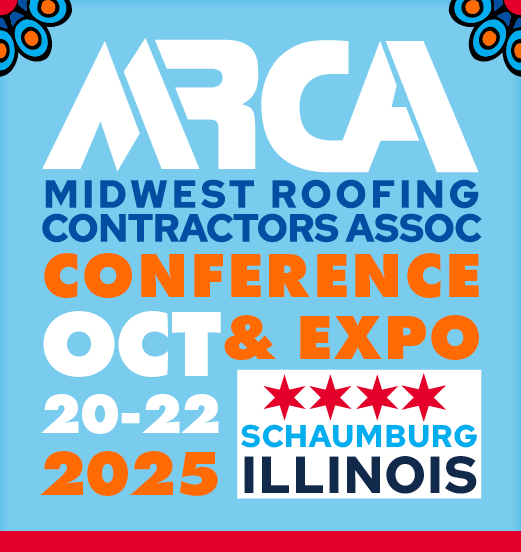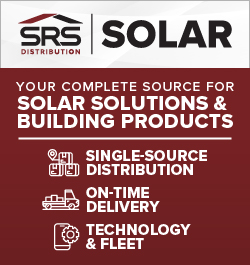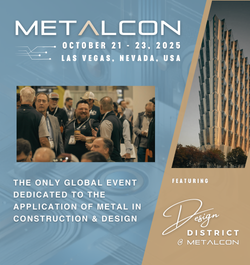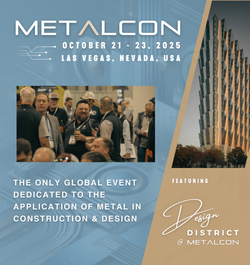Building compelling content through innovative management styles – Part 3

By Ingage.
Improve your collaboration with the correct content management system.
Part 1 of this series covered the basics on content management and the power it can unlock for your team. Then Part 2 highlighted issues that might be encountered as you implement these systems. For this third and final part of the series, Ingage created a guide to different content management tools to help you find the one that works in your situation.
It is crucial to select the right system to get the most out of contact management. If you try to work with a system that is not compatible with your content goal or preexisting processes, it will be detrimental rather than beneficial.
Content management systems fall into two distinct groups: traditional and headless. A traditional or monolithic CMS excels at creating content for a single kind of output: the static website. When websites were the only type of digital experience available, the traditional CMS handled the content creation job adequately. While conventional wisdom dictates that companies acquire the newest CMS with all the latest bells and whistles, you might end up paying for advanced features and add-ons that your team won’t need.
Over the years, more and more channels have appeared outside of web pages. Social apps, Internet of Things (IoT) devices and even augment reality (AR) and audio-visual (AV) equipment all have their own content requirements. To cope with the demand, content management systems evolved into a headless variety. Simply put, the front-end system is separated from the back-end system. As a result, a headless CMS lets users reuse content and create multiple versions for these new channels and devices.
Traditional content management systems
The early 2000s gave rise to monolithic, do-it-all content management systems. They freed users from the complexities of coding and added features such as search engine optimization (SEO). As the name implies, the traditional CMS also carries a lot of legacy features found in older systems. This includes:
Monolithic platform
A traditional CMS platform caters to a single-channel output: the website. The monolithic content management system sprouted during the days when the internet was all about web pages. It consists of tightly integrated front-end and back-end systems. This means that once a user publishes content, it stays in the CMS in its final and only version. To produce content for a different channel, authors must recreate the same content in a new format designed for the new channel.
But as mobile devices become more powerful and social apps became more prevalent, a problem has emerged. A traditional CMS can’t reuse that web-based content to create mobile and app versions. This prevents marketers from creating content in formats that were beginning to become popular. As a result, they can’t reach new audiences who gravitate to these new channels.
Template and plug-in reliance
As the traditional CMS focuses on web page output, it doesn’t really require much flexibility when creating web posts. So, developers must produce static templates and plug-ins that make it easier for content creators to publish dynamic content.
While templates and plug-ins are easy to install and use, they’re hard to modify for further personalization. Instead, businesses that need a new format will have to acquire a new template from providers or create one themselves.
Plug-ins allow for added functionality, but the CMS still remains a monolithic application that’s faithful to the website format. Considering that a legacy CMS consists of fixed hardware and software, plug-ins are mostly software workarounds that are tied to the content management system’s limitations.
Business user-friendly
A traditional CMS gives business users (marketers, sales reps, customer service) the opportunity to generate content themselves. Instead of having to contend with back-end web developers, they now have the freedom to create content and publish at will. The traditional CMS signaled the start of business user–produced content and the decline of back–end–produced pages.
Limited scalability
A traditional CMS has a fixed architecture that limits what users can do. This also severely limits the tools, applications and even programming languages that users can utilize. With its limited architecture, developers have to stick with whatever program and language exists in the CMS to create customizations.
Even worse, switching platforms means learning an entirely new system - different content management systems aren’t compatible.
What’s more, with the front and back ends intertwined, any problems on one end are also a problem for the other. This includes server crashes, downtimes and data loss.
Examples of traditional content management systems
Among the traditional CMS platforms, WordPress remains the most popular and is still widely used today. For content developers primarily engaged in producing web blogs and email marketing messages, the traditional content marketing system has the requisite tools and technology to get the job done.
One major reason WordPress continues to enjoy a large following is because it’s open-source software. While businesses pay between $30 to $3,000 per WordPress-powered website each year, individuals can use the services to build personal websites for free.
In addition, Shopify is both an eCommerce tool and a monolithic CMS that’s making waves because it works well with other systems. Note, however, that both examples are now offering headless versions: a headless Software Development Kit for Shopify and a headless plug-in for WordPress.
Headless content management systems
The headless CMS evolved from the need to simplify the process of republishing the same content on multiple channels. Given the limitations of the traditional CMS architecture, creating an omnichannel experience meant developing completely new content every time.
Aside from omnichannel support, the other advantages of a headless CMS include expanded content management tools, improved editing features, application programming interface (API) support, enhanced security and future-proof content.
Expanded content management tools and improved editing features
With decoupled front and back ends, a headless CMS can now accommodate more content management tools and developer resources. When creating content, it supports rich text editing, adaptive modules, approval workflows, business rules, previews and automated tasks.
A headless CMS also improves the business user experience. Content creators now have an easier time editing content and uploading new versions. Plus, the seamless front and back ends make for a faster and better experience when modifying published content.
API support
Instead of working with limited options, headless content management systems allow developers to use API tools to work with different technologies and recognize different data formats. This frees them to work with various programming formats and integrate the CMS with many popular software and applications.
Enhanced security
The headless nature of a modern CMS means having only one access point: the API. This gives cybercriminals a smaller area to work within when launching distributed denial-of-service (DDoS) attacks and other disruptions. In contrast, a traditional CMS is database-driven, which means increased vulnerability to security breaches and data theft.
Future-proof content
Even better, a headless CMS allows users to repurpose existing content for publication into different channels. Not only can it publish content for today’s various digital channels, but it can also accommodate new digital formats as soon as they become available. This means that your CMS won’t become obsolete as new technologies and platforms emerge. Instead, it will continuously adapt and deliver content to meet future demands.
Examples of headless content management systems
Headless CMS continues to gain ground on traditional, open-source CMS. For a non-eCommerce, headless CMS experience, Contentstack offers composable digital experiences. Other headless CMS options often take the Software-as-a-Service (SaaS) route, including Contentful, Storyblok and Magnolia.
Ready to collaborate and manage content with ease?
Choosing the right collaboration tool such as a CMS entails more than just looking at the price tag and listing the features and benefits. What’s more important is to align your present requirements with what your targeted software can do.
You might also want to consider your budgetary requirements in relation to your business needs. In many cases, opting for a SaaS provider can help you achieve your objectives more efficiently than purchasing a platform outright. Many monolithic systems are open source in nature and only charge minimal maintenance fees.
When considering a content management system for your sales and marketing requirements, what factors should go into play?
Ease of use
Choosing the right CMS means getting the platform that makes your job easier. Considering that today’s digital market requires an omnichannel experience, a headless CMS should take precedence over a traditional one. This alone reduces the headache of having to repurpose existing content to fit the formats of other channels and devices.
Ease of use also translates into actual content creation. You should feel at ease working with the controls, so an intuitive interface is a must. Full editing options, including text formatting and preview, are great features to consider.
Search engine optimization (SEO)
There’s no point in creating content if your audience won’t be able to find it. This is why it’s important to have powerful SEO and readability improvement features on standby.
These tools track your content and assign a score based on SEO and readability performance. The higher the score, the better for organic search results. Once your content creators develop the habit of achieving high SEO and readability scores, you’ll find your content hovering near the topmost pages of Google’s search engine results.
Integration
If your team is intent on publishing across multiple channels to get the widest coverage, API integration is vital. A headless CMS is also called an API-first CMS, so this type of content management system should take priority over traditional ones.
By opting for an API-first model, you get to separate your content from its eventual formatting. This allows you to always have your content on standby for output to any device or channel.
Some eCommerce platforms also double as a CMS to integrate content with online store management. If you operate online stores or list your products on popular retailer sites, you might want to check out which platforms work best for you in terms of cost and functionality.
Security
With cybercrime activities projected to cost $10.5 trillion over the next five years, it pays to have your CMS secure from DDoS attacks and other attempts at data theft. Take stock of the security measures present in your planned CMS.
Open-source options carry additional risks due to their open nature. Anybody can download the software and search its inner workings to find vulnerabilities. In many cases, additional security plugins plus password safety practices (long alphanumeric passwords, no repeated instances, etc.) can help deter attacks.
Performance
SEO scores are also affected by a platform’s performance. Your choice of CMS can affect page loading times and other metrics that Google uses to measure SEO scores. So, be sure to utilize the latest versions of CMS platforms to avoid getting penalized for slower load speeds.
In addition, see if your chosen CMS is future-proof. New devices and even newer digital channels are always on the horizon, so having software that won’t soon be obsolete is a good idea. The ideal CMS should be ready to integrate with new technology and publish content to newer devices and channels without a hitch.
Tighten collaboration within sales teams through interactive presentation software
Your choice of CMS can significantly impact your digital sales and marketing efforts. Simply getting a content management system off the shelf and expecting a dramatic improvement in your campaigns is a little ambitious. As an organization, you’ll need to invest additional time and effort to learn the ins and outs of your CMS and make it work to your business advantage.
When creating content in the form of presentations, consider using interactive presentation software that’s also a great content management and collaboration tool. Ingage is cloud-based interactive presentation software that allows you to create highly engaging presentations anytime. For instance, you can add interactive elements throughout your presentation to tell a compelling story. Or make sections come alive by adding interactive buttons that present additional information when clicked.
With its cloud collaboration capabilities, Ingage lets entire teams work on the same presentation remotely. Once completed, you can send your target audience a link instead of file-heavy copies. Built-in analytics track the viewer’s screen time to identify sections that held the most interest. Ingage will also report on areas that held little interest for the viewer so that creators can make further improvements. As the leading sales enablement presentation platform, Ingage can transform the way you sell your ideas.
Original article source: Ingage
Learn more about Ingage in their Coffee Shop Directory or visit www.ingage.io.























Comments
Leave a Reply
Have an account? Login to leave a comment!
Sign In